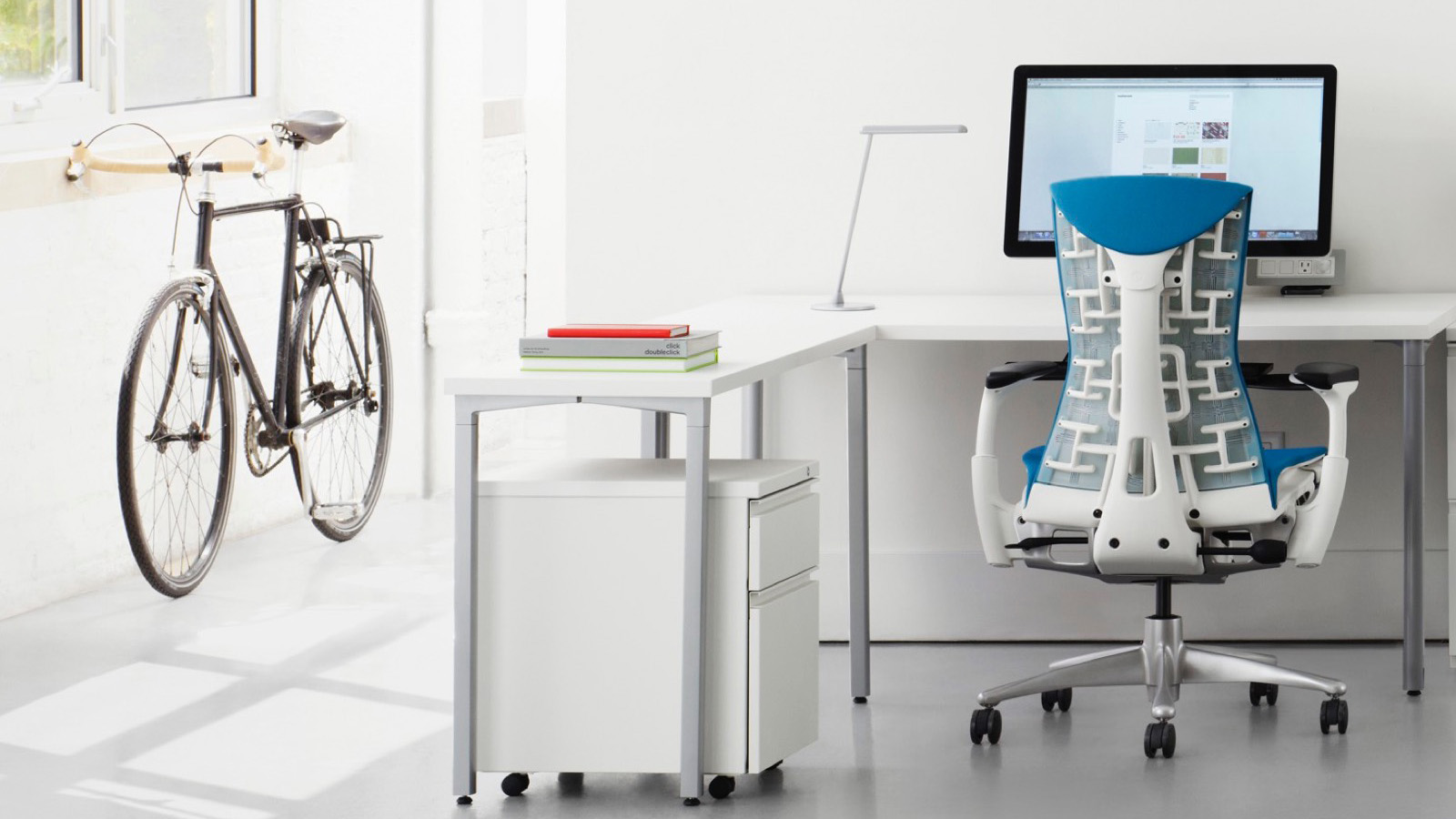Sitting pretty! Iconic chair maker Herman Miller explains what good posture should look like and what makes a chair ergonomic
With lower back pain becoming endemic around the world, this is timely advice for hard working creatives.

What makes a chair ergonomic? The word ‘ergonomic’ might conjure up visions of mediaeval interrogation devices, but it just means something that’s designed with the long-term comfort of its user in mind. It's something that chair makers Herman Miller have been pondering for several decades, and for good reason. With lower back pain now the single leading cause of disability worldwide (according to the NHS and the World Health Organization) getting one of the best office chairs for back pain should be on most creative's to do list.
You see, sitting down all day isn’t good for us (no duh!). Not only does it affect both your spine and the back muscles, but as it uses less energy than standing it can slow your metabolism too. Standing in one place isn’t great either, as it places strain on the same parts of the body and can lead to lower back pain too.
The trick is to find a balance between sitting, standing and moving about, and for those not interested in committing to a new standing desk, an ergonomic chair is a great solution. That's why I spoke to Joel Olive, director of seating at chair manufacturer Herman Miller, about what good posture actually means, and what makes a chair truly ergonomic.
Take a seat: what is good posture?

We began by talking about posture. “There is not a ‘one size fits all’ or single standard ‘good posture,’” says Joel. “Good posture is contextual and depends on multiple factors including the activity performed, the duration of sitting and the unique characteristics of the person sitting.”
We rather thought he might say that. Happily, there has been a lot of research done to discover exactly what it is that our backs need from a chair, especially one that we’re going to spend a lot of time in, and this science even has a name: anthropometrics. “This is the chief methodology of determining the fit between the body and tools and surroundings,” says Joel.
“It is done by defining body dimensions. Anthropometrics helps product designers decide, for example, the dimensions and contours of work chairs. The science is based on statistical modeling of our bodies: linear dimensions, surface, masses, range of motion, centre of mass, and more. These physical characteristics have profound implications for the design of workspaces, products, and tasks. We need room to move, to breathe, and to fit comfortably. The better the fit, the better the posture and better performance.”
Adjust your attitude

All of which makes perfect sense, and underlines why office chairs are so adjustable – why they have knobs, dials, levers and switches that allow you to spend hours of your day wiggling bits of them around to better suit your posterior. This is one of the features Joel recommends chair buyers look for when choosing new accommodation for their hindquarters: “The features we recommend customers look for in an ergonomic chair include premium materials that deliver both performance and quality, the ability to adjust the chair either automatically or manually to meet their needs, size guidelines to ensure the best overall fit, and certifications and a warranty that reflect the brand’s commitment to longevity and sustainability”.
Daily design news, reviews, how-tos and more, as picked by the editors.
“Adjustable ergonomic features to look for include adjustable arms, adjustable lumbar and sacral support, tilt limiters and seat depth. These adjustments enable you to customise the fit and performance of the chair to best fit your needs, posture, and range of movement.”
How to choose an office chair that's right for you? Get one that fits you: “The best performing chair for you is often the one that fits your body the best,” says Joel. “While many chairs can fit a large range of sizes, everyone’s body is different, and it is best to select a chair with the closest size and dimensions for you. Chairs designed to fit a larger percentage of the population – like the three sizes of Aeron – have a much better chance of fitting your body type.”
What's in your line of sight?
There's another part of this equation, and that’s the position of your computer monitor within your workspace. Your eyes should be level with the top third of the screen, which should then be an arm’s length away from you - things that can be a problem as the best monitors for graphic artists get larger and larger. “If the worker can’t adjust the placement of the monitor to a viewing angle and distance that’s comfortable for the eyes, the body will compensate,” says Joel.
“Hunching over and craning the neck may bring the eyes closer to the display, but doing so makes for an awkward and unhealthy working posture. It also negates many of the ergonomic benefits of sitting in a high-performance work chair. Because there is so much variation in seated eye height and in distance-from-display viewing preferences and viewing angles, we recommend adjustable monitor arms.”
There's as much work to be done setting up an ergonomic workplace as there is once you’re settled in. There are other ways to improve the comfort of your workspace, but getting a chair that suits your shape is one of the top methods of making work a more comfortable thing to do.

Beren cut his teeth as Staff Writer on the digital art magazine ImagineFX 13 years ago, and has since worked on and edited several creative titles. As Ecom Editor on Creative Bloq, when he's not reviewing the latest audiophile headphones or evaluating the best designed ergonomic office chairs, he’s testing laptops, TVs and monitors, all so he can find the best deals on the best tech for Creative Bloq’s creative professional audience.
- Ian EvendenFreelance writer
You must confirm your public display name before commenting
Please logout and then login again, you will then be prompted to enter your display name.
